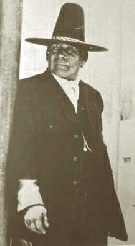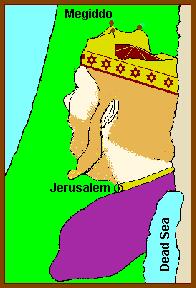
Saga of Burrows Cave: Egyptian Artifacts in America?
|
Saga of Burrows Cave: Egyptian Artifacts in
America?
see
http://www.net22.com/bcc/, which
has some very nice pictures of these artifacts.
A bizarre collection [of artifacts] was found in a remote cave system
in the American State of Illinois. The cavers who made the discovery encountered
a derisive response from the first academic experts they approached, experiencing
a lot of difficulty finding necessary specialists to help them document and
identify the artifacts. There were problems of site security, disappearing
artifacts, as well as people bending data to suit their personal agendas.
As the site researcher Fred Rydholm remarks: "For this kind of research you
have to be thick-skinned, brave or crazy!" It's one thing finding these things,
its quite another to explain them.
In the United States the saga of "Burrows Cave" has been going on for
well over a decade. Over three thousand rock fragments, engraved with a variety
of ancient drawings, hieroglyphs and script, were presented to the world
by Russell Burrows in 1982, who discovered them in a cave system in Southern
Illinois. The story of the cave and its contents is so strange, that it's
little wonder it has met strong skepticism. Recently deciphered for the first
time, the stone tablets tell such a wild tale that it will require quite
a turn around to accepted history. I was stunned into disbelief when I first
laid eyes on the Burrows Cave evidence. This is no straight forward set of
hieroglyphs but, an inexplicable display of several cultures, a huge library
preserved on stone tablets, collected together and sealed in a cave sometime
around the first millennium.
The first photographs of the artifacts were forwarded to me by Filip Coppens,
who writes about world mysteries in Belgium. He had heard about my investigation
of the anomalies surrounding the presumed hoax of Egyptian hieroglyphs in
the NSW Hunter Valley. He was struck by certain odd similarities between
the two finds and sent pictures of the carvings which depicted a wolf-headed
god, similar to an "Anubis" carving photographed in the Hunter Valley.
Certainly, the Burrows Cave boasts a few forms of wolf and jackal-headed
deities, from the classical Anubis to half human versions. One of the Burrows
Cave examples is executed in bas-relief, with accompanying hieroglyphs, embossed
on a gold plate. However, there is much more than wolf-headed deities, the
carved tablets display an extraordinary cultural array. There is a hodgepodge
mixture of images and cultural influences which make the artifacts very hard
to explain. Even worse, some of the carvings seem amateurish or dimly remembered
copies of ancient Greek and Mesopotamian sources.
Whereas, others involve a high level of skill and obvious knowledge of
ancient cosmology. One of the images depicts a "wolfish" deity in priestly
regalia, wearing a bishop-style hat decorated with a solar emblem. The deity
has been identified as the god "So-Bek-Ra", who is so pictured on a temple
by the Nile. The figure stands, as the lone representative of an ancient
priesthood, against an advancing enemy army. There are also many carved heads,
mostly warrior profiles, wearing both Greek, Roman and Egyptian headgear.
Curiously, there are even images of ancient Amer-Indians wearing feathers
and facial designs, some showing clear Meso-American style head-dress. Records
of ancient travellers? Amongst them are many ancient mystical and sacred
designs, as well as maps, pictures of ships and non-indigenous animals.
Astonishingly, one of the carvings portrays the cloven-hooved god Pan, holding
his pipes and consorting with a nymph. Another stone (as well as an ancient
metal coin) excavated from the cave carry the bold image of an elephant
underlined with Hebrew characters.
Oddly, an artifact inscribed in exactly the same way was found on a
pyramid-shaped stone in Ecuador some years earlier. Some of the carvings
are meticulously executed in full bas-relief, some completely carved into
the shapes of animals and deities, while other tablets were etched to render
the designs. Even a small collection of solid gold artifacts and coins have
been excavated. More than just pictures, there are numerous tablets with
coherent linear script carved on them. Examples and influences appear to
range from Hebrew and Sumerian to Roman, Greek and Egyptian.
In my correspondence with Fred Rydholm, the best theory I could offer,
was to speculate about a colony of resourceful pirates, who in some distant
time, raided and collected the strange quasi-cultural cache of artifacts
for themselves. Together with an associate Dr James Scherz, who helped in
the study and documentation of the artifacts, Fred Rydholm found correlations
between symbols on the Burrows Cave coins and coins produced by dynasties
along the "Silk Road" between China and Rome, the most predominant being
"Kushana" and "Satavahana"symbols. ( NOTE: The Kushanas once controlled a
trade dynasty along the Silk Roads, uniting various ancient people's in the
days of the Romans. They disintegrated with the collapse of the Western part
of the Roman Empire about AD 300.
The Satavahana's were a seafaring people who lived on the coast of the
Indian Ocean and had large ships represented on their coins before they collapsed
around 210-230 AD. This suggests the likely time period of early in the first
millennium around or after 200 AD. ) Finally, Fred Rydholm was able to report
a significant breakthrough with two young Florida researchers, Paul Schaffranke
and Brian Hubbard, who were successful in deciphering some of the inscriptions.
Schaffranke and Hubbard recognised them as being one of several ancient Etruscan
alphabets which could be translated into "street Latin", as used around the
time of Christ. T
he two Florida men were able to translate stone tablets from the Burrows
Cave that the great epigrapher, Dr. Barry Fell and others, had insisted were
gibberish and could not be translated. Mixed in amongst the Etruscan script
there is also the added mystery of Hebrew and Egyptian stone tablets. These
were also recently identified and are being translated by Dr. Arnold Murray
of Arkansas and, Zena Halpern, a Hebrew scholar from New York. The Egyptian
material is still being assessed. Over half a dozen professional archeologists
and linguists have now examined the collection and have been definite in
their support of the artifacts' authenticity.
At last contact, the Burrow's team had dug out and classified an astonishing
four thousand stone tablets. Another breakthrough came, when a retired engineer
Bill Kreisle, found several of the stones recorded accurate maps of the
Mississippi River system as it appeared 2000 years ago. Another map stone
shows a river on the Iberian Peninsula (Spain) with the ancient city of Cadiz
near its mouth. But, most astonishing of all, they have reported the discovery
of several stone crypts, excavated from limestone deep in the cave system,
containing a number of interred skeletons with jewellery, artifacts and statuary.
The mystery people who left the cache of records are, apparently, themselves,
buried there. The biggest continuing mystery of the discovery is, WHO carved
all these message tablets and from whence came this hidden dynasty of bodies?
Fred Rydholm, who works with and writes, for the retiring Col. Burrows, reports
in his recent correspondence : "Although I speak with caution, as it is still
too early to say for sure, there are many indications that the bodies found
in the crypts are the leaders of a colony of refugees from Ptolemaic Egypt,
including a Jewish contingent from the Roman controlled Kingdom of Mauritania.
Dr Joseph Mahan, founder and longtime president of the Institute for the
Study of American Cultures (ISAC), has examined the evidence from the new
translations and presents this interesting scenario: "They were secretly
sent to America in ships provided by the Mauritanian King Juba the Second
and his wife Cleopatra Selene, daughter of Cleopatra and Marc Anthony. Included
among the refugees were the Queen's two brothers, who disappeared from Rome
(and recorded history) in 17 AD, Ptolemy Philadelphus and Alexander Helios."
The graves of these people have been the object of a comprehensive historical
search for the past two thousand years. We appear to have an advanced and
well funded group of priest/scholars who, with the ex-Royal families, escaped
the Roman Christianisation of Egypt and set off into the unknown somewhere
around 200-300 AD. The engraved maps and their collected storehouse of knowledge,
shows a deliberate transplanting of culture, perhaps to escape the religious
persecution of the Roman Invasion of Egypt and establish a remote colony
which could preserve the ancient records.
Indeed, Dr Joseph Mahan, an archeological anthropologist who made a close
study of the cave artifacts, reveals a detailed cosmology and religious lore
from the cave material which is remarkably similar to that which survived
amongst the Indian tribes of the area. The area of Southern Illinois and
Indiana, where Russell Burrows stumbled into the limestone cave system, is
richly endowed with the scattered evidence of several different early cultures
which archeologists know too little about.
There are log tombs, skeletons and artifacts from the Adena culture, which
is believed to have developed around 500 BC and to have died out by 200 AD.
There was the Hopewell culture, 100 BC to 350 AD. A mysterious culture
concentrated along the Mississippi, known as the "Mississippian", crystalised
around 800 AD, and was thought to still be in existence when the Spaniards
arrived. Researcher, Joseph Mahan, points out, that archeologists have collected
evidence for fifty years of an elaborate and uniform Earth/Sun religion,
associated with the building of flat top temple mounds, which spread out
from the Mississippi in the later part of the first millennium.
These pyramid-like mounds, which carried a permanent fire at the top,
contained a variety of art, impressed on copper and stone, depicting
animal-headed deities, crosses, swastikas, and people in ceremonial dress
performing rituals. Examples of these mound sites are spread from Oklahoma,
to Illinois, Alabama and Georgia. Could the Burrows Cave, indeed, be the
lost library and resting place of the founders of this mysterious culture?
Founders, the inscribed tablets puport to be, the ex-Egyptian Royal family
escaping the sacking of ancient Egypt early in the first millennium?
from
http://www.rabid-wolf.com/article.php?sid=36at

|

























